We often wonder what would happen if we were forced to confront a life-or-death survival situation alone. Questions like how would I react, what first steps would I take, and how long could I make it run through our minds. It’s an interesting and sometimes frustrating thought exercise, with no way to fully test our survival theories without diving headfirst into dangerous circumstances. However, there’s an alternative way to explore these ideas from the safety and comfort of our homes.
History Channel’s popular TV series Alone mitigates the risk and gives the audience valuable insights by pitting some of the world’s top survival experts against the elements for as long as they’re able. The title of the show is fitting, since each contestant must try to stay alive for as long as they can completely by themselves — a true worst-case scenario.
It’s easy for viewers to relax with all of life’s modern amenities and armchair quarterback what’s happening on the screen, but there’s a lot going on behind the scenes that isn’t shown or discussed. We wanted to discover deeper insights into what the contestants are up against, and interviewed four former Alone contestants who were willing to share the wisdom of their experiences.
Britt Ahart
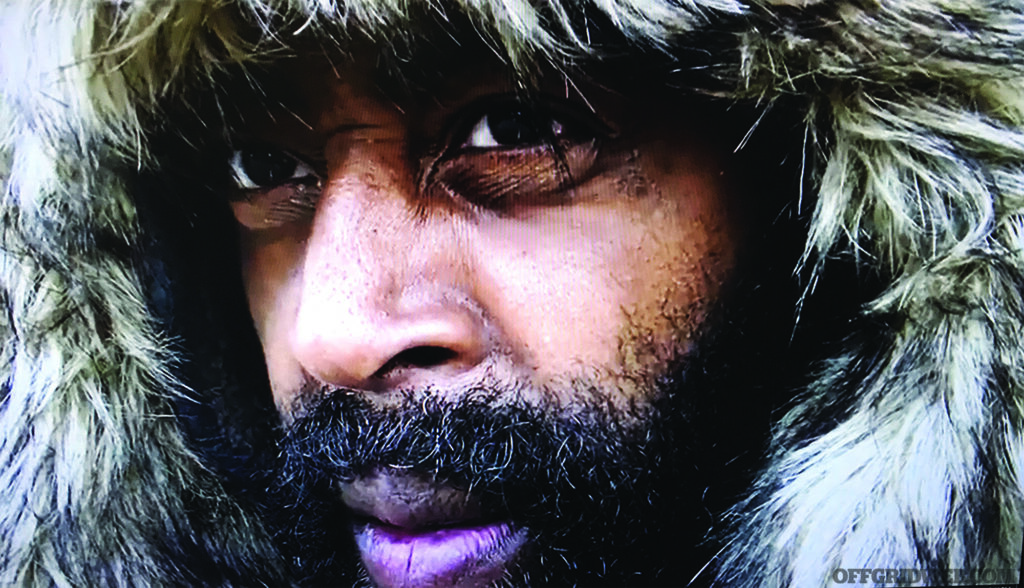
What seasons of Alone did you participate in?
I participated in seasons 3, 5, and Alone: The Skills Challenge.
If you had to start your survival learning journey over from square one, what are the top five skills you’d focus on, and in what order?
The order I would learn would likely be fire, foraging, traps, shelter, and water. That’s basically how it started for me.
Let’s say you’re tasked with surviving for one month in the woods using only the gear you can carry on your body/back. You have an unlimited budget. Starting with the type and size of pack, what’s your loadout for the perfect long-term wilderness survival ruck?
One month in the woods with an unlimited budget? Man … I’d go with a 65L backpack, big enough for the gear that I need. I’m just going to start listing items: knife, multi-tool, paracord, fishing gear (line, lures, flies, hooks, Tenkara rod), trapping line, compound bow/arrows, panda pot, single-walled canteen, ferro rod, Silky saw, Leatherman multi-tool, small tent, wool blanket, .22 rifle and ammo, flashlight, water purification tools/tablets, book on wild edibles, pad/pencil, compass, med/toiletry/sewing kit. That’s all I came up with. I think that would be more than enough — I thought I’d proven that I can do it with way less. [Laughs]
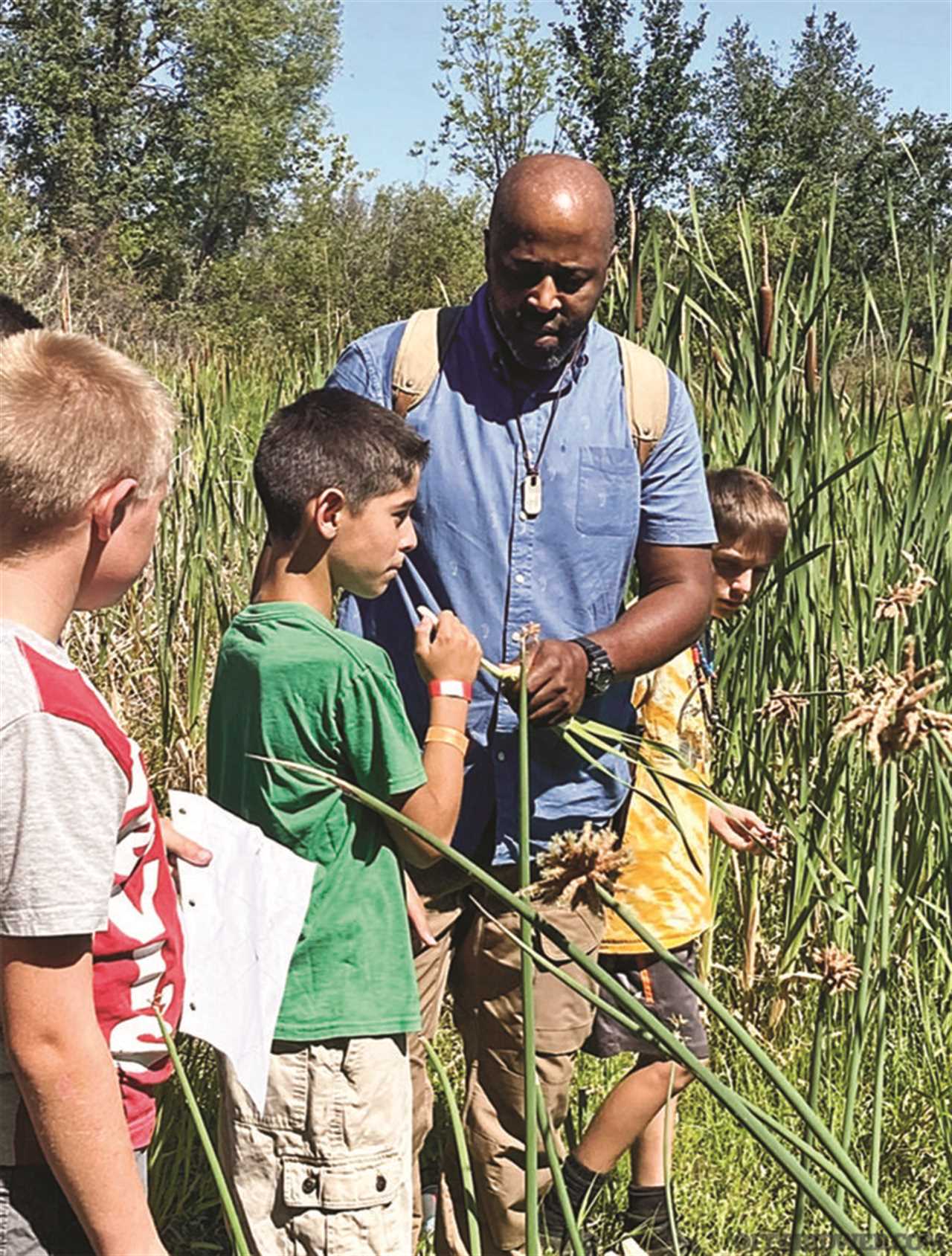
Above: Ahart enjoys teaching survival skills to kids and passing on his love for the great outdoors.
Weather, plant and animal life, natural resources, and other factors vary widely from one region to the next. How do you prepare for an extended stay in an environment you’ve never experienced before?
When I was preparing to go on Alone, I did extensive research on both Argentina and Mongolia. Such foreign lands — I had to learn a lot about the flora, the fauna, proximity to water sources, the topography, the weather, and even the altitude. It’s important to know these things so you can be prepared for as many situations as possible. Know how you’ll acquire water and increase your likelihood of getting the nutrients that you’ll need. And knowing the trees helped in constructing an idea of what types of shelter I could build.
What’s the most impactful nugget of survival wisdom you’ve ever received?
The brain is the biggest survival tool. All of the bushcrafting and survival knowledge won’t help you if you can’t keep a level and focused mind. That also allows me to think out-of-the-box and be resourceful when the situation deems it necessary.
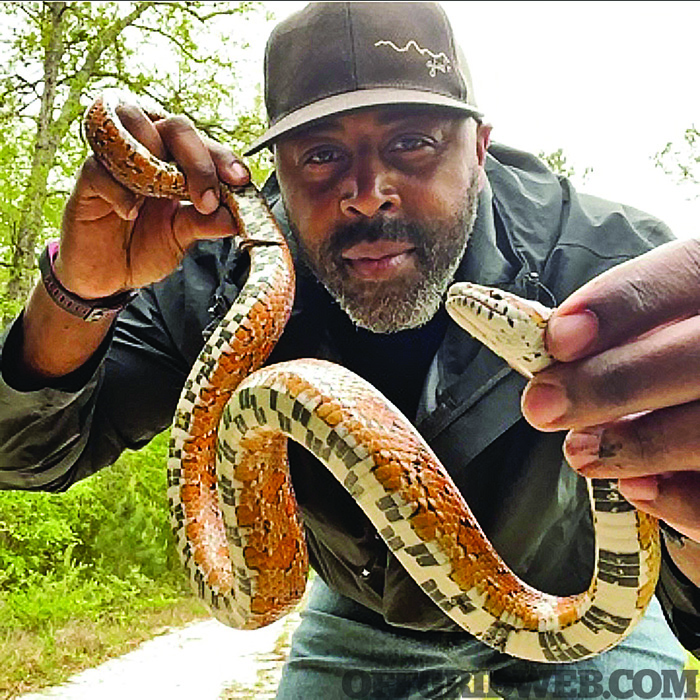
Above: “I’ve never been afraid of snakes. I think they are incredibly amazing creatures.” Ahart snapped a photo with this colorful corn snake before returning it to the wild.
What do you wish the viewers of Alone would understand as they’re watching the show?
I wish the viewers would understand that this show is more than a camping competition. This is a psychological experiment that really tests one’s mind and resilience, as well as skills. For me, there were a lot of internal struggles I faced and skeletons I released from closets.
Do you have any advice for those aspiring survivalists contemplating how they’d fare in the wild?
Be prepared to really get to know yourself. I’ve found that the longer that I spend in nature by myself, the more I reset to who I really am. No one around to wear a mask for, so you become who you really are.
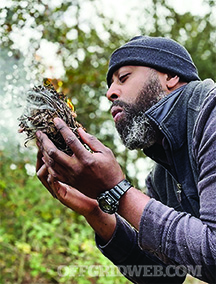
Do you have any projects, classes, or other news you’d like to share with us?
I’ll be featured in an article in Vulture magazine. My collaboration with Valor Talent Group is continuing to grow. We are reaching a lot of kids, teaching them outdoor survival and getting them interested in exploring nature. And there are a few other future projects that I can’t talk about yet.
Where can we find you online?
Matt Corradino
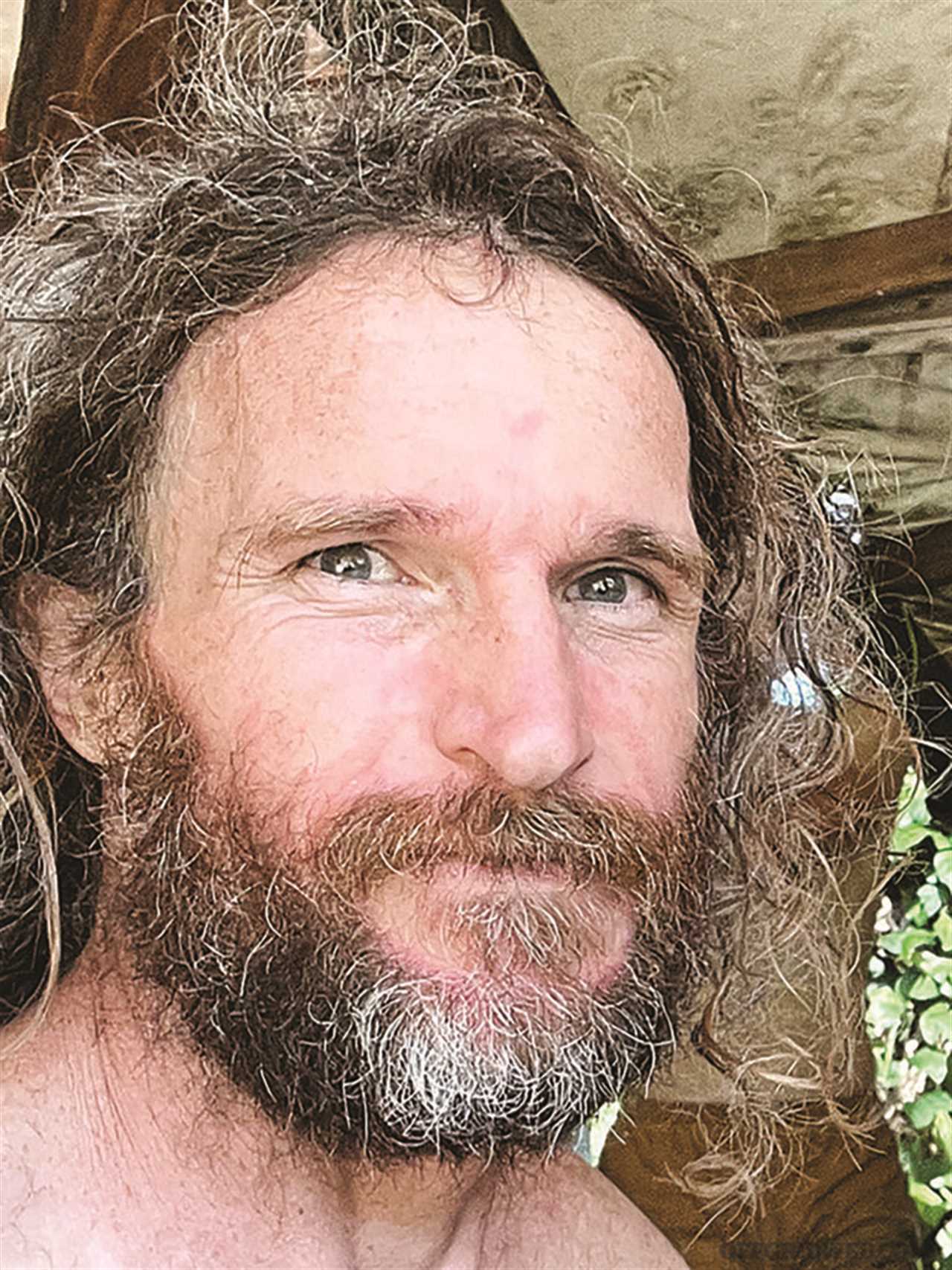
What season of Alone did you participate in?
Season 8.
If you had to start your survival learning journey over from square one, what are the top five skills you’d focus on, and in what order?
If doing the show again, I would work on the same skills — shelter, water, fire, and food. For me, food gathering skills include hunting with bow and arrow, foraging, and fishing. I suppose if I did it all again, I might work more on trapping.
Let’s say you’re tasked with surviving for one month in the woods using only the gear you can carry on your body/back. You have an unlimited budget. Starting with the type and size of pack, what’s your loadout for the perfect long-term wilderness survival ruck?
For one month of survival, I’m taking a full-size pack for transporting things I might find while in the bush. In that pack would be a hunting knife, a folding saw (Silky of course), a small hatchet, a small-handled hacksaw and four or five extra blades, fishing line and an assortment of hooks, a takedown wood bow and six arrows (mostly broadheads and a few small game arrows), a cooking pot, a water bottle, and most importantly a first aid kit.
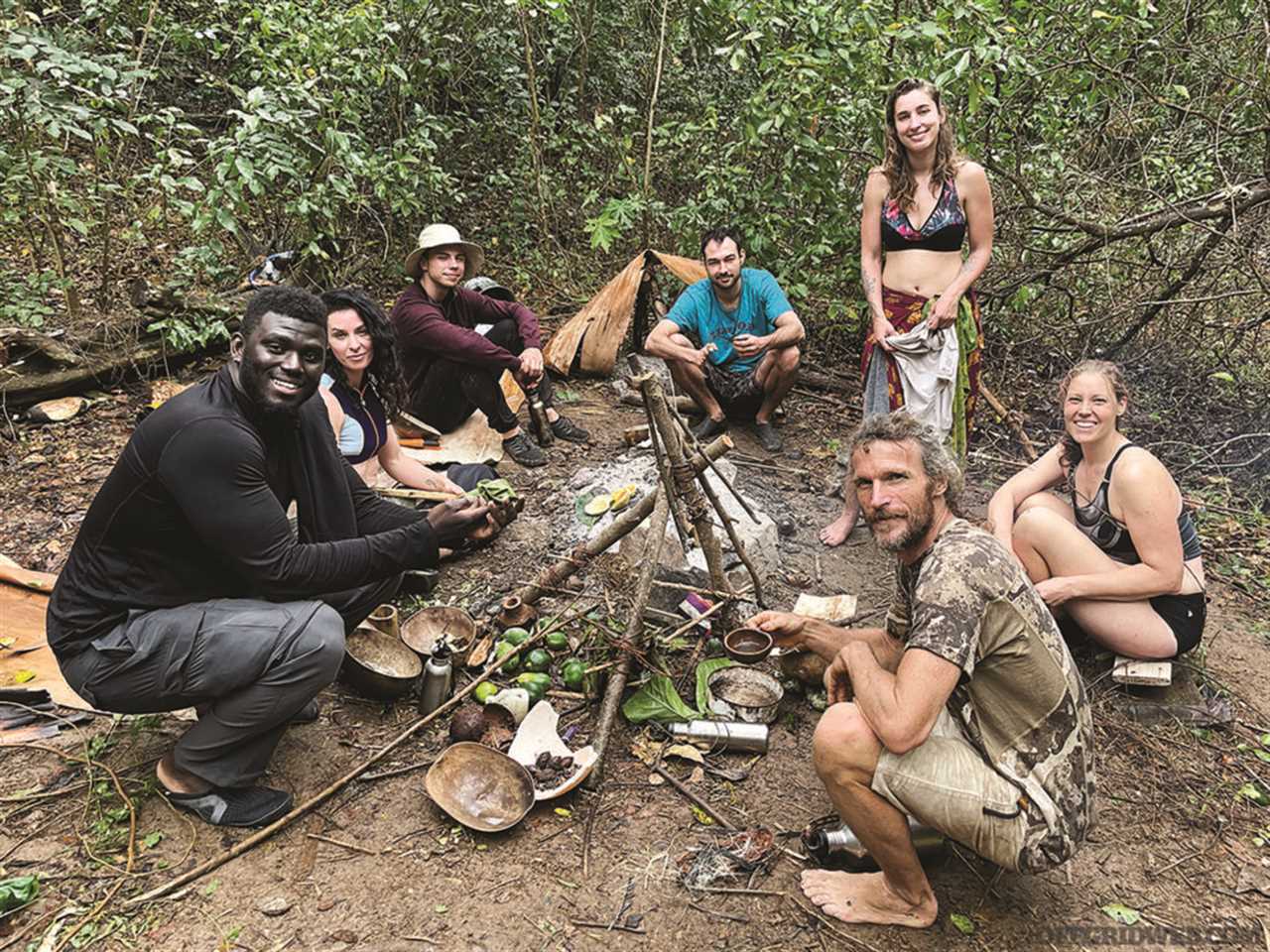
Weather, plant and animal life, natural resources, and other factors vary widely from one region to the next. How do you prepare for an extended stay in an environment you’ve never experienced before?
I constantly train primitive survival with the principles of each skill in mind, so that I can adjust each skill set to the materials at hand. The only real challenge is knowing the plant life in each region. To help with this, I spend a lot of time studying the plant families in the temperate zones and the poisonous plants worldwide. There are less plants in the world that will kill you than those that won’t. If I know it won’t kill me, I have room to experiment.
What’s the most impactful nugget of survival wisdom you’ve ever received?
There are too many nuggets to choose from for a wiseass like myself, but I’ll choose this one: You have to spend the calories until you have more than enough. If you don’t burn the calories to get more, you’ll burn them all lying in bed.
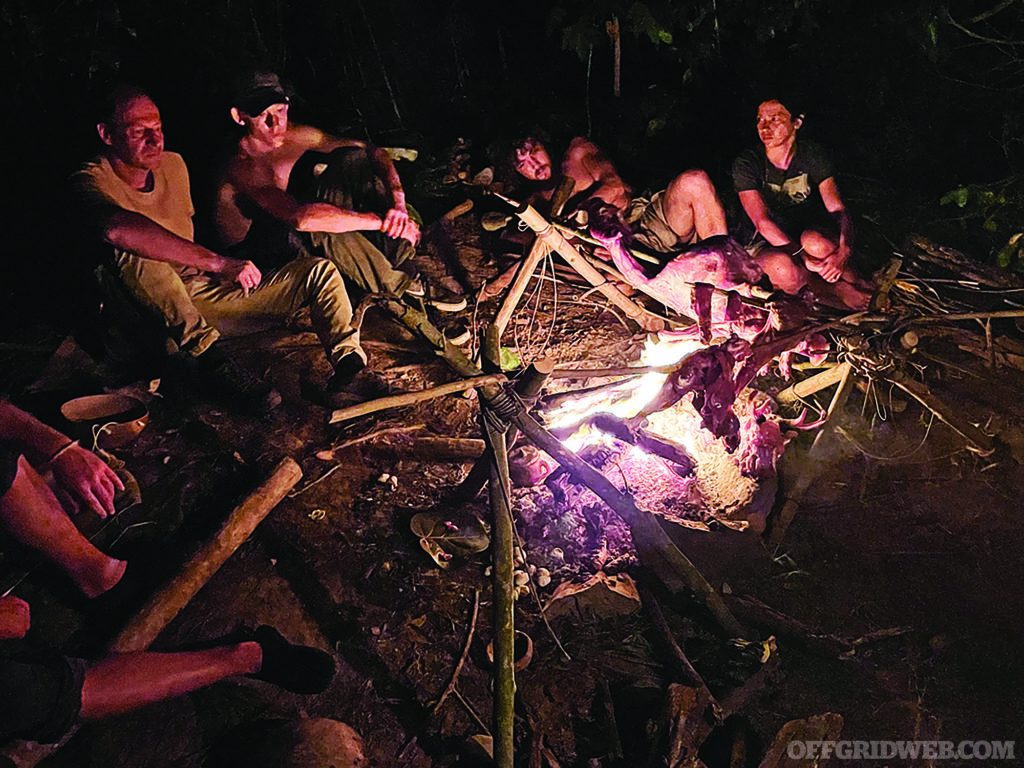
Above: On a recent group outing on his home island of St. Croix, Corradino found a dead deer on the beach that was likely killed by wild dogs. “I’ve never been so well fed on a survival trip,” he recalled.
What do you wish the viewers of Alone would understand as they’re watching the show?
There are two main things people should know when watching Alone. First, the contestants are dealing with a completely debilitating set of hunting and fishing restrictions. Due to the legalities of a show like this, there are far fewer things you can catch than things you can’t catch, which makes true survival almost completely impossible for most seasons. The second thing is that the show is highly edited. It is very likely that the narrative you are watching is a fantasy created by the editors. The amount of time spent in the bush is always at the very least a hundred times longer (not an exaggeration) than the amount of airtime given to any contestant. The editors often tell the story of their own choosing due to time constraints and the lack of freedom inherent in working with a major TV network.
Do you have any advice for those aspiring survivalists contemplating how they’d fare in the wild?
It’s way harder than you think. But because of that, and because you’re better at it than your immediate results might show, it is one of the most rewarding things you can spend your time on in life.
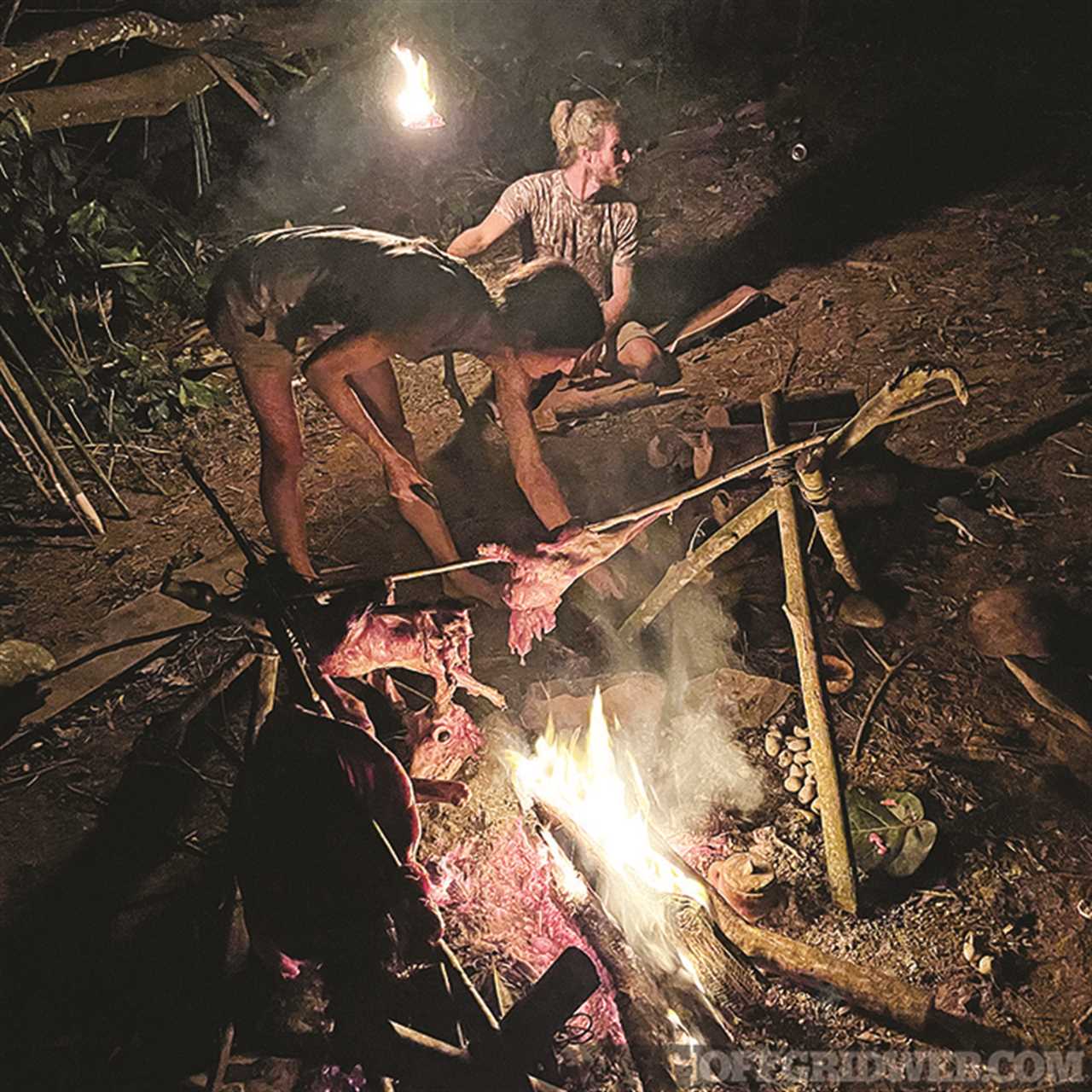
Do you have any projects, classes, or other news you’d like to share with us?
We offer survival trips, skills classes, and spear fishing classes throughout the year.
Where can we find you online?
Caribbeanearthskills.com or my YouTube channel,
Caribbean Earth Skills. I’m also on Instagram and Facebook under Matt Corradino.
Jessie Krebs
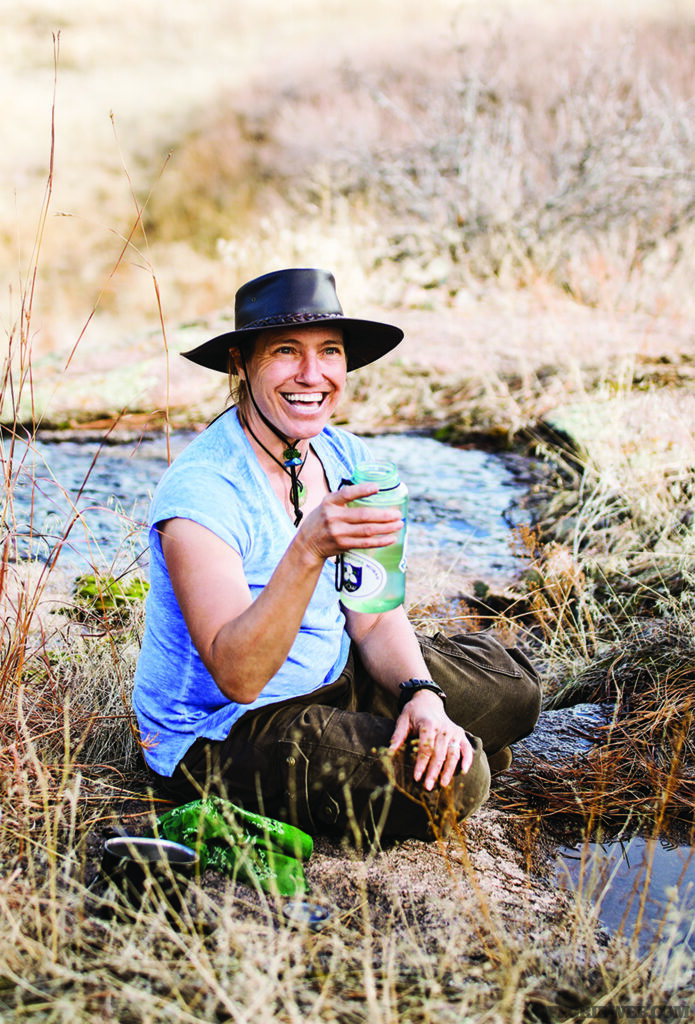
What season of Alone did you participate in?
Season 9
If you had to start your survival learning journey over from square one, what are the top five skills you’d focus on, and in what order?
Navigation, knots/hitches/lashings, shelter principles, firecraft, and medical.
Let’s say you’re tasked with surviving for one month in the woods using only the gear you can carry on your body/back. You have an unlimited budget. Starting with the type and size of pack, what’s your loadout for the perfect long-term wilderness survival ruck?
I’d prefer an external frame pack; 60-liter capacity should be large enough. I’d take a sleeping bag plus a full- or queen-size fitted flannel bedsheet (sleeping bag liner); a non-inflatable, flat, roll-up sleeping pad cut down to fit me; an 8×10 heavy-duty tarp, about 100 feet of paracord, a few toiletries (soap, toothpaste and brush, couple hair bands, and some lotion/salve), a large garbage bag (pack liner), a small med kit, water disinfectant (iodine tabs), a metal canteen cup, two bandanas, a map and compass, some food in a bag (5 pounds of carbs, 2 pounds or so of dried veggies, 2 pounds or so of dried fruit, and 3 pounds or so of dried meat or pemmican), some spices, two 1-liter canteens, three knives (high carbon fixed blade, multi-tool with saw, and small whittling knife), a lighter, a ferro rod, a small piece of pitchwood (tinder), a rain jacket and wool top, two extra pairs of socks, a sew kit, a pen and notebook, a sun hat, a warm hat and neck gaiter, fingerless gloves, a headlamp and extra batteries. I’d wear socks, boots, cargo pants, a sports bra, and a button-down long sleeve shirt. Depending on the time of year, I might also include a dromedary water bag, and about 3 square yards of ripstop nylon. And depending on the steepness of the terrain, perhaps 100 feet of 9mm climbing rope, 30 feet of mule tape, and a couple carabiners. I’m assuming getting out is not the priority, so I haven’t included any dedicated signaling gear. And this is more of a vacation pack than a “survival” one.
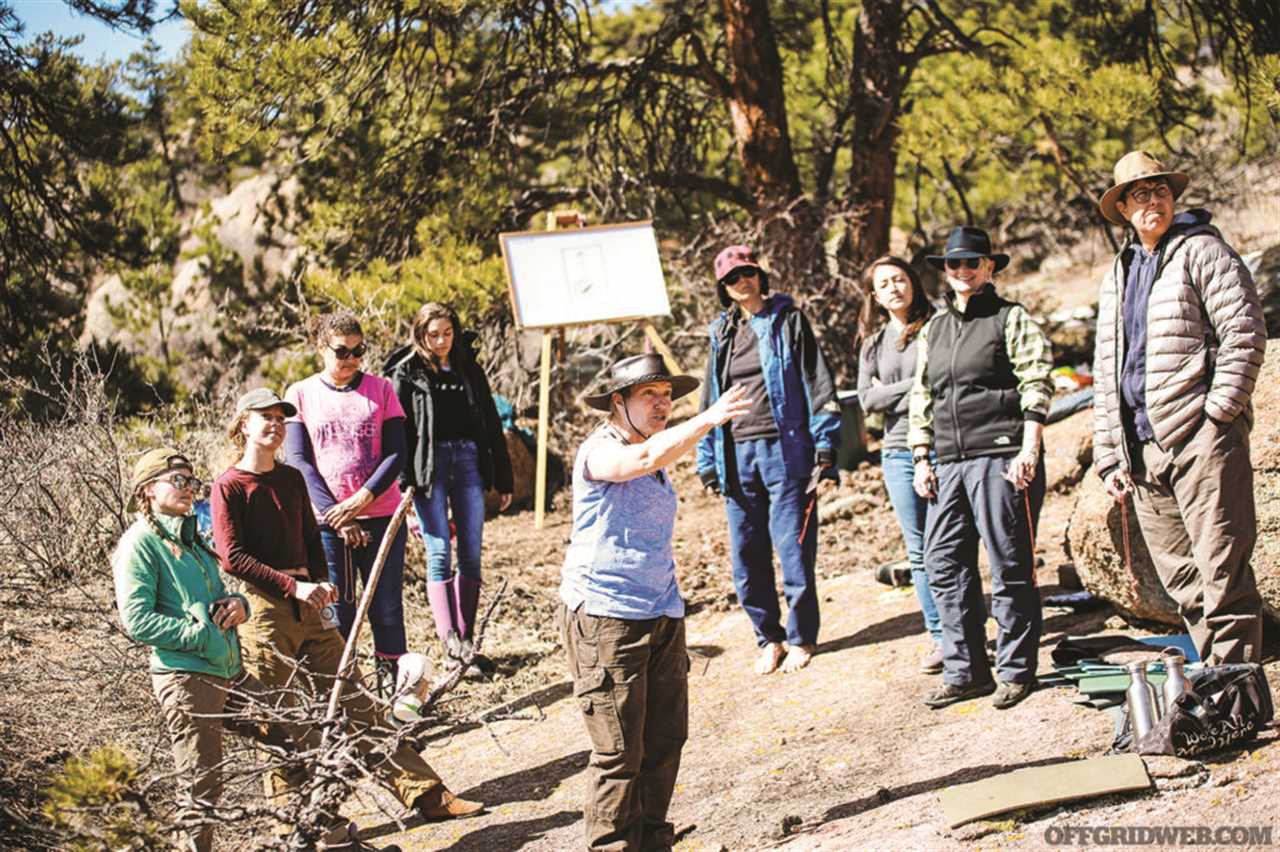
Above: Krebs is a former U.S. Air Force SERE specialist and the founder of O.W.L.S. Skills (short for Outdoorsy Women Learning Survival). She's passionate about helping women feel empowered by teaching them skills that are traditionally considered masculine.
Weather, plant and animal life, natural resources, and other factors vary widely from one region to the next. How do you prepare for an extended stay in an environment you’ve never experienced before?
I’d learn as much about it as I can before I go. What are the seasonal average temperature and precipitation patterns? What is the elevation and terrain like? Are there particular animals, reptiles, insects, and viruses/illnesses to be wary of? What’s the social and political climate? Feelings toward Americans? I plan to be as self-contained as possible, with everything I need, and all that I take should be easily adapted to whatever environment I find myself in. I go through the five basic needs and make sure I have what I would need for every environment: signaling (if rescue may be necessary); personal protection (clothing and equipment, shelter, fire); navigation, health, sustenance (water and food needs).
What’s the most impactful nugget of survival wisdom you’ve ever received?
Be aware. Pay attention, look for patterns — what’s going on with you, with the water, the wind, the weather, the animals, the plants, everything? Open your senses to your surroundings. Awareness is living and engaging. Awareness is a relationship, connection, and community.
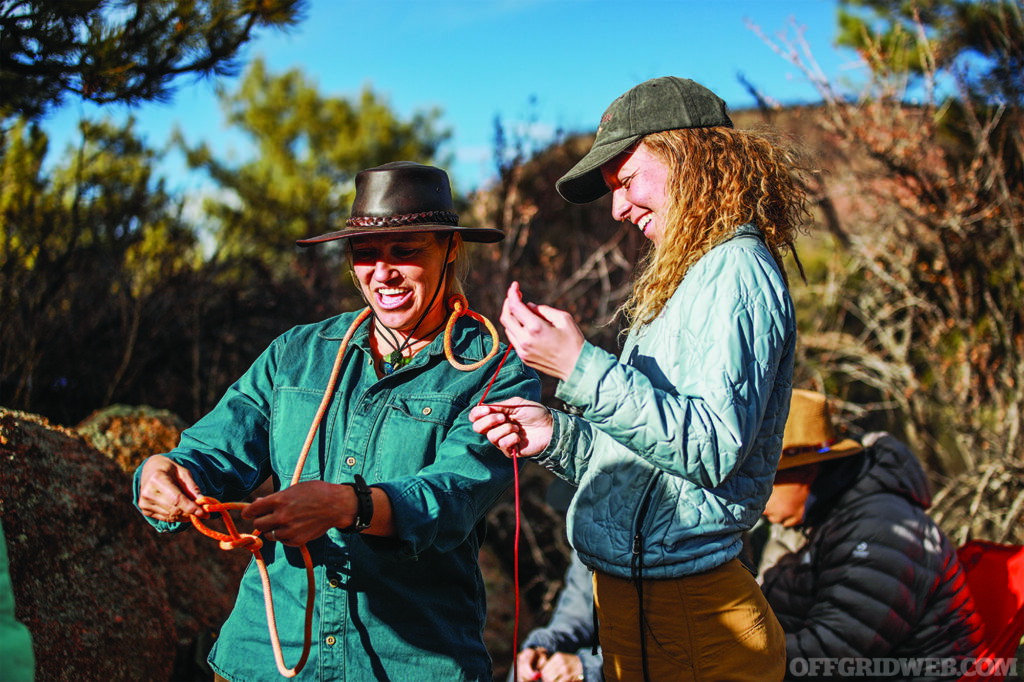
What do you wish the viewers of Alone would understand as they’re watching the show?
Viewers only get to see a small snippet of what is going on for each participant. So much is not filmed and so much is not shared on the show.
Do you have any advice for those aspiring survivalists contemplating how they’d fare in the wild?
This situation doesn’t put you in crisis mode, so if you’re good in a crisis, that doesn’t mean you’ll last on the show. Are you good at entertaining yourself? How do you deal with boredom and long-term discomfort?
Do you have any projects, classes, or other news you’d like to share with us?
My school is primarily for women, and I collaboratively run a lot of women-only courses; however, I do occasionally run courses for all demographics, and also offer custom courses for special occasions on whatever topics and wherever and with whoever you like.
Where can we find you online?
Larry Roberts
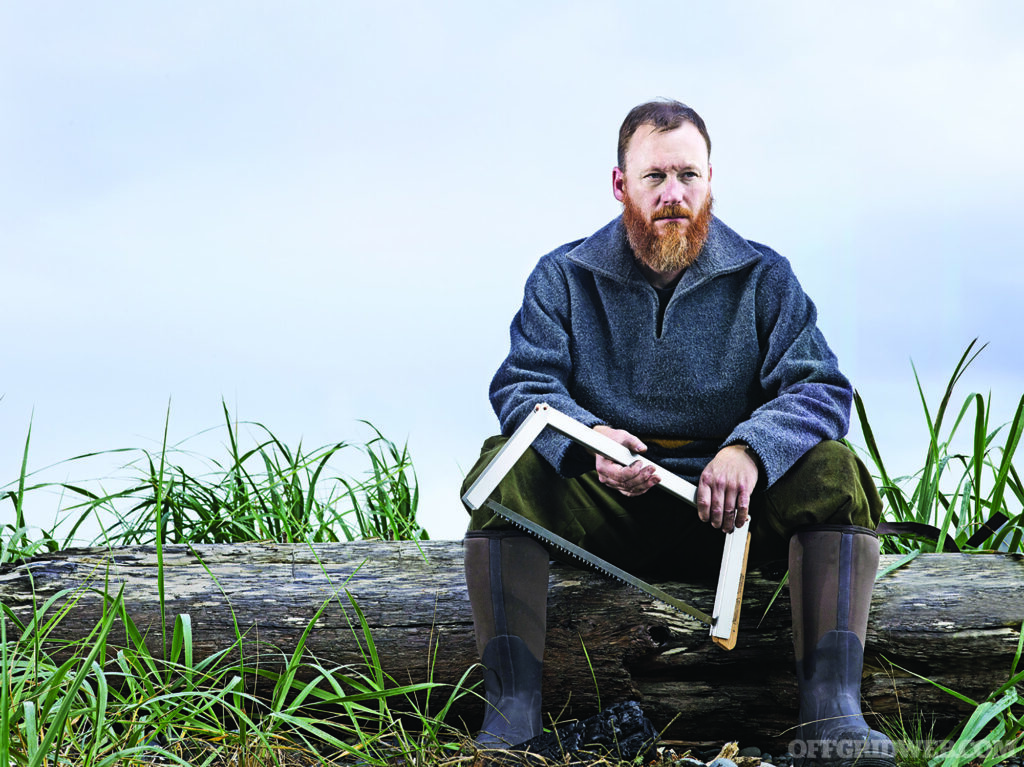
What seasons of Alone did you participate in?
Seasons 2 and 5
If you had to start your survival learning journey over from square one, what are the top five skills you’d focus on, and in what order?
This is always a common question, and the answers can vary on your environment and what activities you do in the outdoors. Procuring water might not be as hard snowmobiling as say hiking in the desert. Having said that, my priorities are: fire, water procurement, shelter, thermoregulation, and problem solving. It is hard for me to put one skill before the others as they can change even by season. Freezing weather in January will have different problems or challenges than an 80-degree day in July. Once you have the basic skills down, I’d say problem solving is one of, if not the, most important skill you can learn.
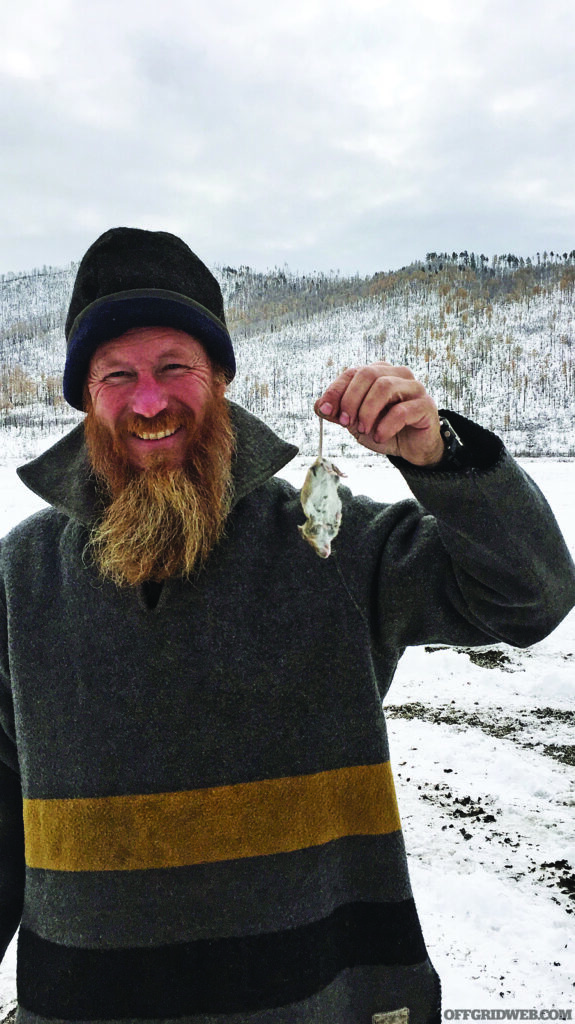
Above: Above: Alone fans will recall Roberts' continuous battle with the mice that scurried through his shelter.
Let’s say you’re tasked with surviving for one month in the woods using only the gear you can carry on your body/back. You have an unlimited budget. Starting with the type and size of pack, what’s your loadout for the perfect long-term wilderness survival ruck?
One of my favorite packs is called the ILBE (Improved Load Bearing Equipment), which is a military surplus pack. I’m not super into packs, so I really don’t focus on them too much. If the pack has sufficient room to carry my gear and is comfortable, I’m fine with it. I’ve used expedition packs, military surplus, and generic brands.
I would for sure take a sleep system and a tarp or tent. Most times I would prefer a tent, however sometimes a tarp can have more flexibility. I have had good luck with oilskin tarps for longevity, but they are heavy. Currently my favorite tent is a two-man tent from REI called a Half Dome 2+. My sleep system usually includes a sleeping mat (also from REI) called an Exped 9 and a sleeping bag. Depending on conditions, I will take a generic bag or if it gets real cold, I will take my Wiggy’s or Feathered Friends sleeping bag.
Another piece of kit I would bring is a cooking system and a water bottle. My cooking set can be as simplistic as a military-style canteen cup or it could include a small pot and frying pan. I prefer stainless steel for my cooking kit and especially for my water bottle.
I would also, of course, take a knife. I love my Gen 6 from LT Wright Knives, and I feel this knife is the perfect “survival” knife. Depending on the location or environment I might also include a saw, hatchet, or ax. Most times I prefer a saw over an ax or hatchet. I really like my Boreal 21 folding saw.
I love a nice fire, so I would include a 1/2×6-inch ferro rod and a lighter or two.
There are always lots of uses for cordage or rope, so I would include a bit of that as well. Usually, I take around 25 feet of paracord, and the same amount of tarred bank line. Both have their pros and cons.
Personally, I would take lots and lots of food. Starving is quite unpleasant. [Laughs]
Lastly, I would include a headlamp with extra batteries. I’m not a fan of doing a lot of night movement or traveling but having an artificial light in camp can be a huge morale boost and make a lot of camp chores safer and easier to accomplish.
There are some other small items I would like, such as Chapstick and a small medical kit, but the above list is a good starting point. Of course, individual medications (if needed) should be included as well as communication equipment or safety gear.
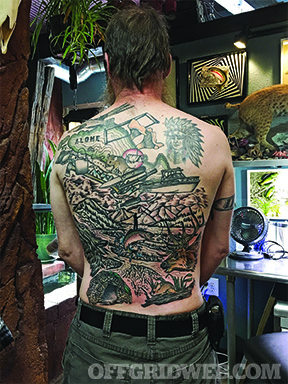
Above: Roberts' back tattoo memorializes various events from his appearances on the show.
Weather, plant and animal life, natural resources, and other factors vary widely from one region to the next. How do you prepare for an extended stay in an environment you’ve never experienced before?
I try to learn skills that are viable in most environments. Starting a fire in the jungle or the desert uses the same principles. It may be easier in one location, but the theory is the same.
Shelter is also the same in different environments. The resources may be different, but the process is similar. When I am in an unfamiliar area I look for “properties.” I can look at a plant and see if it has the same properties as a different plant that I know. I’m not talking about medicinal or edible plants (special care should be taken with those), but rather plants that can be used for fire, shelter building, or cordage.
This is where problem solving comes into play. You need to look at your environment, look for properties you recognize, and figure out your highest priority. Surviving on Vancouver Island is similar to Mongolia even though the area is vastly different. I still needed water, shelter, and food. Both places offered these resources; they just differed in availability and variety. VCI had mountain lions, wolves, and bears; Mongolia had poison snakes, very aggressive bears, boars, and wolves.
What’s the most impactful nugget of survival wisdom you’ve ever received?
Test your gear. Gear is great, and I love it, but you have to test it just like you test yourself. Don’t depend on untested gear — always try it out and test it.
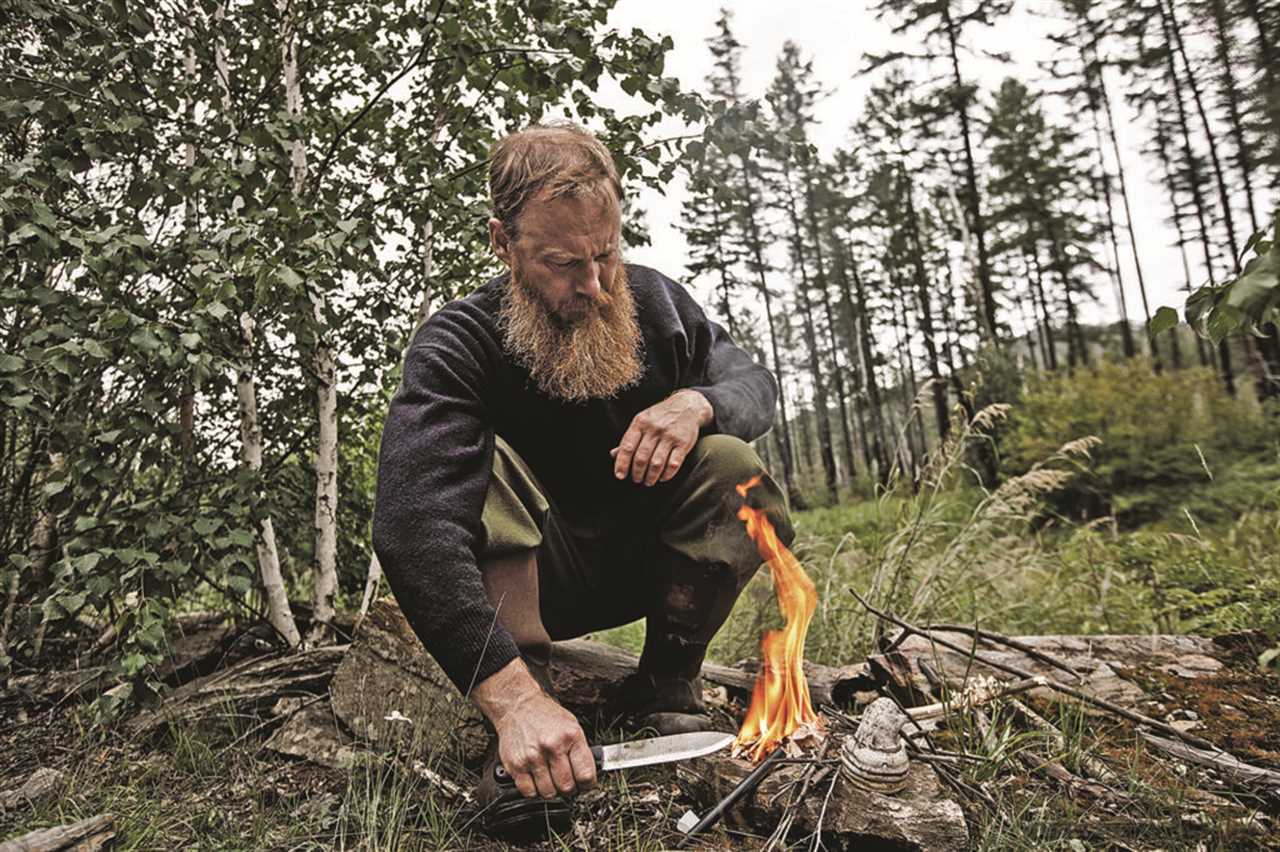
What do you wish the viewers of Alone would understand as they’re watching the show?
It’s harder than it looks. Filming yourself is an incredible energy drain, especially on limited calories. We are really alone, and it is an amazing experience to be truly alone and testing your skills. Also, they don’t show everything we do out there, they simply don’t have the time in a one-hour TV show.
Do you have any advice for those aspiring survivalists contemplating how they’d fare in the wild?
Practice, practice, and practice. Be safe, practice in a controlled environment, and then slowly start to push yourself. “Own” your skills. Practice them until they become second nature.
Do you have any projects, classes, or other news you’d like to share with us?
I am a full-time electrician, so I don’t have regularly scheduled classes. I usually take some time and hold a winter class every year, but mostly the classes I teach are to folks who reach out and request a class.
Where can we find you online?
Read More
Don't forget to subscribe to Recoil Offgrid's free newsletter for more content like this.
The post Going It Alone appeared first on RECOIL OFFGRID.
By: Patrick Diedrich
Title: Going It Alone
Sourced From: www.offgridweb.com/survival/going-it-alone/
Published Date: Thu, 26 Oct 2023 20:58:16 +0000
------------------------
Did you miss our previous article...
https://bushcrafttips.com/bushcraft-news/is-reindeer-moss-actually-edible
 What is BushcraftSurvival SkillsToolsVideosBushcraft CampsBushcraft KitsBushcraft ProjectsPrivacy PolicyTerms And Conditions
What is BushcraftSurvival SkillsToolsVideosBushcraft CampsBushcraft KitsBushcraft ProjectsPrivacy PolicyTerms And Conditions
